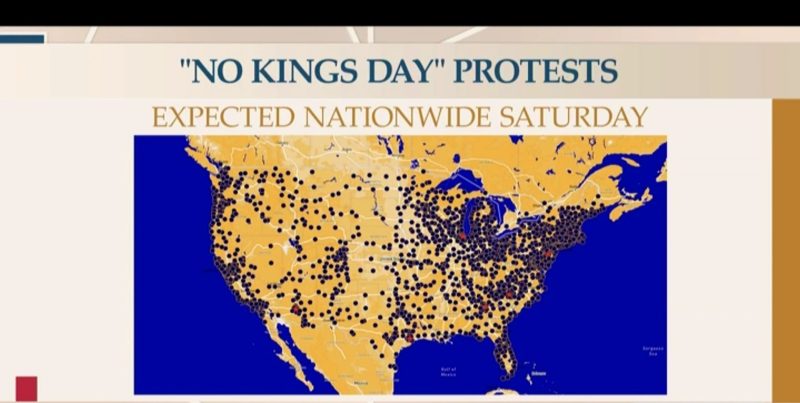
The Weekend America Chose Sides: Protesters, Parades, and the Shadow of War
Setting the Stage: A Parade, a Protest, and a President
This weekend, the United States is a country in motion sometimes in step, sometimes in open defiance. On Saturday, June 14, the National Mall in Washington, D.C., will thunder with the spectacle of tanks, marching bands, and flyovers, all marking the 250th anniversary of the U.S. Army. It’s also President Donald Trump’s 79th birthday, and the parade is, by all accounts, the kind of made-for-TV event he’s long craved. But as the military hardware rolls through the capital, a different kind of movement is sweeping the rest of the nation: the “No Kings” protests, a sprawling, decentralized day of action in more than 2,000 communities, from Anchorage to Atlanta, Philadelphia to Phoenix.
The Protesters’ Message: “We Don’t Do Kings in America”
The “No Kings” movement is, at its core, a rebuke of what organizers call the Trump administration’s “escalating overreach” from immigration crackdowns to civil rights rollbacks. Ezra Levin, co-executive director of Indivisible, one of the groups behind the protests, put it bluntly: “We don’t do kings in America.” The phrase has become a rallying cry, scrawled on cardboard signs and chanted in city parks. The protests are intentionally everywhere but D.C. a strategic decision to avoid direct confrontation with the military parade and, perhaps, to sidestep the president’s threats of “heavy force” against demonstrators in the capital.
I spoke with a federal employee in Philadelphia, who, holding a sign that read “Federal Employees Don’t Work for Kings,” told me, “This isn’t just about Trump. It’s about the idea that no one is above the law not in this country, not ever.” There’s a certain electricity in the air, a sense that this is more than a protest; it’s a declaration of values.
A Parade with Global Echoes: Israel, Iran, and the Optics of Power
The timing of this American spectacle is impossible to ignore. As the U.S. flexes its military muscle at home, the world watches a different kind of parade one of escalating conflict between Israel and Iran. In the days leading up to the parade, Israeli airstrikes on Iranian targets and retaliatory threats from Tehran have dominated headlines. The symbolism is thick: a president presiding over tanks and troops while, half a world away, the machinery of war grinds on.
It’s not lost on the protesters, either. At a rally in Los Angeles, Hunter Dunn, a local organizer, told the crowd, “We’re here because we know what happens when leaders think they’re untouchable. We see it in the Middle East, and we see the seeds of it here.” The connection between domestic protest and global unrest is more than rhetorical; it’s a reminder that the lines between home and abroad, democracy and authoritarianism, are blurrier than we’d like to admit.
The President Responds: “I Don’t Feel Like a King”
President Trump, for his part, has tried to downplay the protests. “I don’t feel like a king. I have to go through hell to get stuff approved,” he told reporters, referencing the legislative wrangling that has defined much of his second term. But his critics aren’t buying it. Senator Bernie Sanders, speaking on CNN, warned that the president’s deployment of National Guard troops to Los Angeles over the objections of state officials was “moving this country rapidly into authoritarianism” Al Mayadeen.
A Day of Contrasts: Democracy in the Streets, Power on Parade
What struck me most, watching the livestreams and scrolling through social media, was the sheer variety of the protests. In New York, a brass band played “This Land Is Your Land” as marchers danced in the rain. In Houston, a group of high school students staged a silent sit-in outside a federal courthouse. In Phoenix, a grandmother handed out water bottles and homemade cookies to anyone who needed them. There was anger, yes, but also joy a kind of stubborn optimism that felt, in its own way, revolutionary.
Meanwhile, in Washington, the parade unfolded with all the pageantry and precision of a state occasion. Tanks rumbled down Pennsylvania Avenue, jets roared overhead, and the president waved from a reviewing stand. The contrast couldn’t have been sharper: democracy as a living, breathing thing in the streets, and power as a carefully choreographed display on the Mall.
What Comes Next?
The “No Kings” protests aren’t meant to be a one-off. Organizers say this is just the beginning of a summer of action, a persistent, people-powered pushback against what they see as the erosion of democratic norms. As one protester in Chicago told me, “We’re not going away. Not today, not after the parade, not until we’re heard.”
In a year already defined by conflict at home and abroad this weekend feels like a turning point. Whether it’s a parade or a protest, a show of force or a show of solidarity, America is, once again, choosing what kind of country it wants to be.
